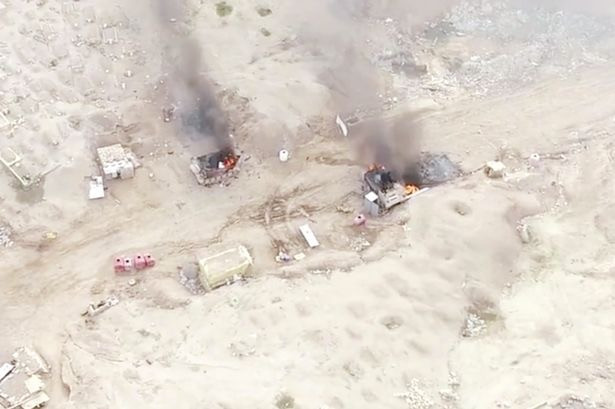Isis using drones to record suicide missions to recruit fighters

Call them social network jihadist drones. Isis has begun to use the mini aircraft to videotape its suicide missions and then distribute the film on social network sites not only to terrorise but to recruit more militants.
In one video, a suicide bomber first appears next to his explosives-packed truck. He hugs his fellow soldiers before driving through a Libyan city and detonates himself — while a drone flies overhead and records it all, reports Wired. The video, reportedly circulated in January, shows the explosion from the sky. It marked the first time Isis used a drone to record a suicide bomber's final moments, according to Wired.
Drones were also used to film fighting in Ramadi in late 2015. That footage was also used in an Isis propaganda video.
The Isis recruiters aren't above stealing other people's footage to serve their ends. After Syed Farook and Tashfeen Malik murdered 14 people at a holiday party in San Bernardino, California, in late 2015, US media outlets ran a film of their empty home, finally resting on the crib for their six-month-old baby girl, an orphan after her parents were killed in a shootout with police.
Photos of the crib, filled with stuffed animals, ran in Dabiq, the English-language magazine that the Islamic State publishes as a PDF. "Syed and his wife did not hold back from fulfilling their obligation, despite having a daughter to care for," read the photo caption.
Isis has achieved a mastery of modern digital tools to disseminate propaganda untouched by any other terrorist groups to date. "Never before in history have terrorists had such easy access to the minds and eyeballs of millions," notes Wired.
Isis has exploited a variety of platforms: social media networks such as Twitter and Facebook, and peer-to-peer messaging apps like Telegram and Surespot. Its decentralised media operations ensure a pipeline of fresh content and videos from West Africa to the Caucasus.
The operation is so sophisticated that the organisation releases, based on a sample period of time, 38 new items per day — 20-minute videos, documentaries, photo essays, audio clips and pamphlets in multiple languages, according to Documenting the Virtual Caliphate, a 2015 report by the Quilliam Foundation.
The output also features public-works projects, economic development and military victories. The "themes" for the Isis "narrative" are mercy, belonging, brutality, victimhood, war and utopia, according to the Quilliam study.
The Isis reach is so extensive that its platform can serve as an "open source operating system for the desperate and deluded," notes Wired, so that any mad man can imagine his violence as part of some vast, greater "mission" — or be moved to sign up with the "caliphate."
© Copyright IBTimes 2025. All rights reserved.






















